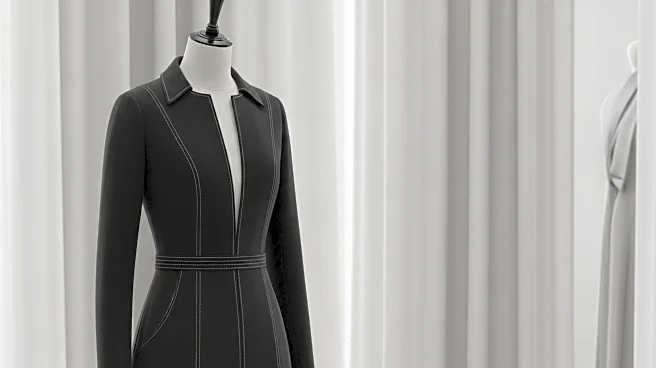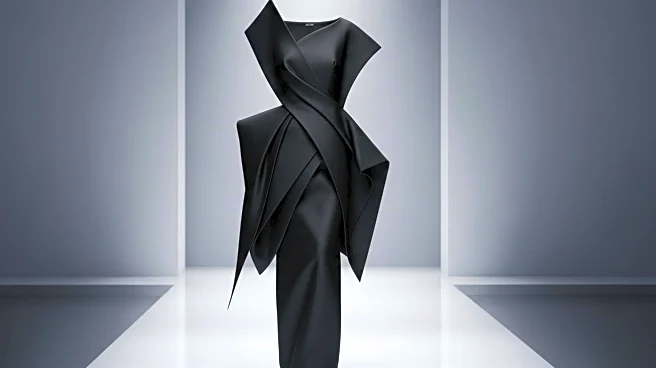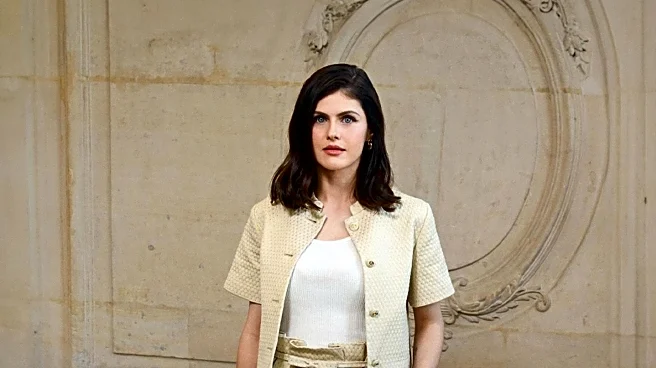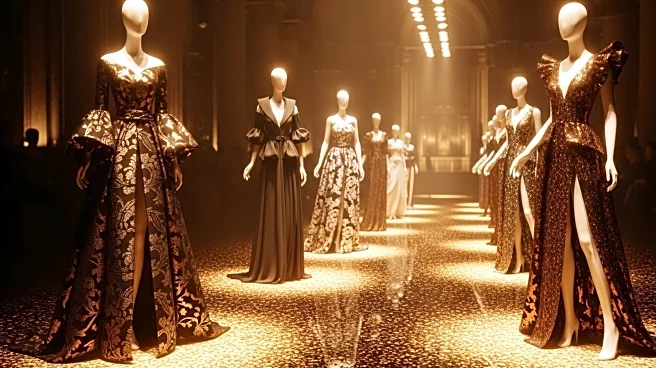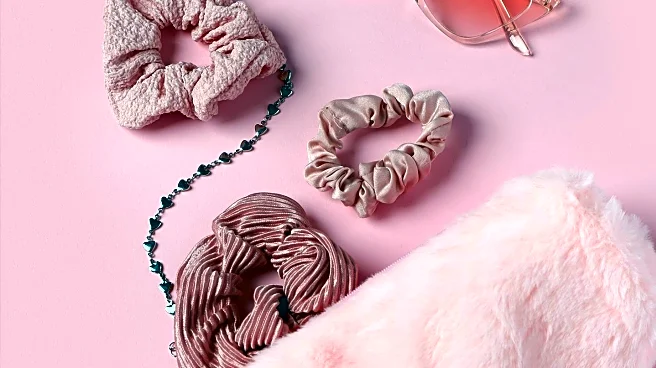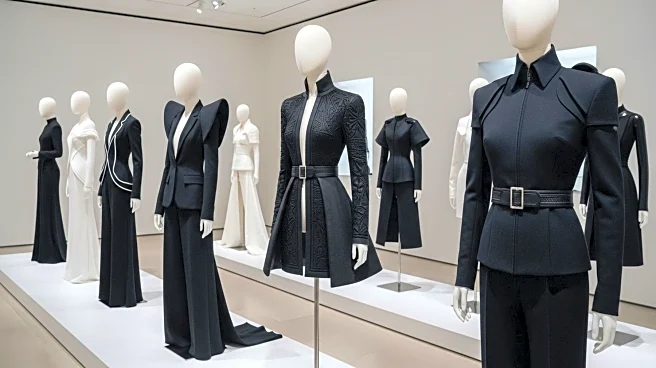What's Happening?
Yohji Yamamoto, the renowned Japanese designer, presented his latest collection at Paris Fashion Week, focusing on the core elements of his signature style. The collection featured monochrome, urban, and fluid silhouettes with subtle rebellious touches. The show began with minimalist black outfits, some adorned with graffiti motifs, transitioning into softer fringed ensembles. Tartan patterns appeared in a deconstructed form, adding a dynamic contrast to the predominantly black theme. The collection also included ethereal white gowns and dramatic red coats, showcasing Yamamoto's flair for understated spectacle. At 81, Yamamoto continues to defy fashion trends, emphasizing simplicity and timelessness in his designs.
Why It's Important?
Yamamoto's approach highlights a significant shift in the fashion industry towards sustainability and timeless design. By focusing on essential elements and resisting the constant push for novelty, Yamamoto sets an example for sustainable fashion practices. His work underscores the importance of creating enduring pieces that transcend seasonal trends, which is increasingly relevant as the industry grapples with environmental concerns. This approach not only appeals to consumers seeking longevity in their wardrobe but also challenges other designers to consider the environmental impact of their collections.
What's Next?
As the fashion industry continues to evolve, Yamamoto's emphasis on essentialism may inspire other designers to adopt similar practices. The focus on sustainability and timeless design could lead to broader industry changes, encouraging brands to prioritize quality over quantity. This shift may also influence consumer behavior, with more individuals seeking out pieces that offer longevity and versatility. Additionally, Yamamoto's continued presence in the fashion world serves as a reminder of the value of experience and innovation in design.
Beyond the Headlines
Yamamoto's collection also raises questions about the cultural and artistic dimensions of fashion. By incorporating elements like graffiti motifs and deconstructed tartan, Yamamoto blends traditional and contemporary influences, creating a dialogue between past and present. This approach not only enriches the aesthetic value of his work but also invites reflection on the role of fashion as a form of cultural expression. As the industry moves towards more responsible practices, designers like Yamamoto play a crucial role in shaping the future of fashion.

